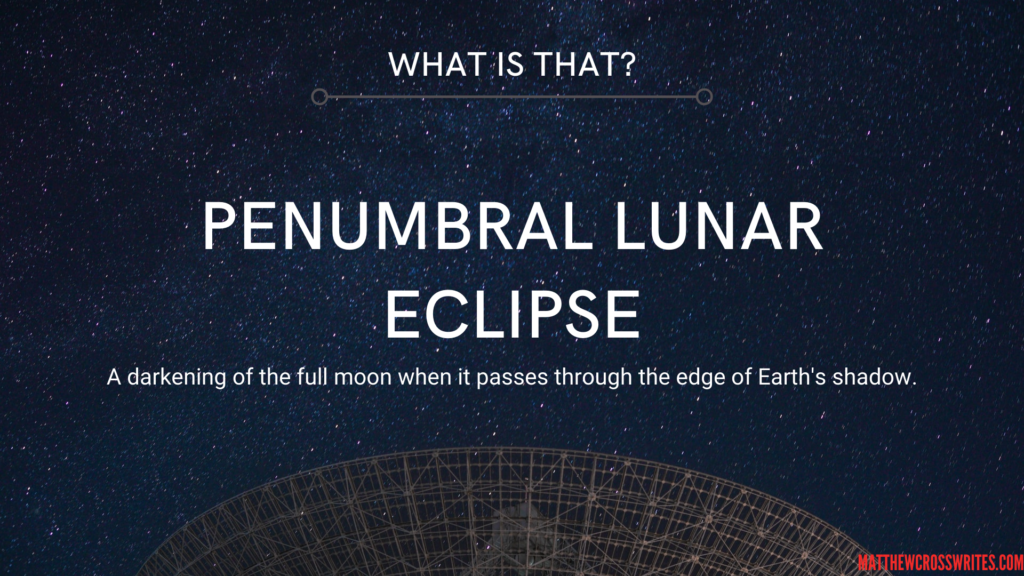
Penumbral Lunar Eclipse–when the moon passes through the Earth’s penumbra, the lighter edge of Earth’s shadow
The night of July 4th, this past Saturday, a penumbral lunar eclipse was visible from the Western Hemisphere. Did you notice? Probably not.
Here’s why:
According to an article by Joe Rao on space.com, the Earth casts two shadows–as do all objects lit by the sun. The area of the darker shadow is called the umbra. The lighter shadow surrounding the umbra is the penumbra. Others describe the umbra as the darkest, central part of a shadow and the penumbra as the lighter edge of that same shadow. The penumbra gradually fades from the complete darkness of the umbra to light at the edges.
So a penumbral lunar eclipse is an eclipse of the moon where the moon passes through the Earth’s penumbra. That means the moon only gets shaded and you should be able to see the full moon during the entire penumbral lunar eclipse.
In fact, if only a part of the moon passes through the Earth’s penumbra, the shading can be so slight that we won’t even notice it. That was the point of Joe Rao’s article: that the penumbral lunar eclipse on July 4 was not a big deal–not nearly as exciting as fireworks or other astronomical sights–because we wouldn’t even notice it.
He says that a penumbral lunar eclipse is only noticeable when about 70 percent of the diameter of the moon passes into the Earth’s penumbra. On July 4 and July 5, only about 30 percent of the moon’s diameter passed through the penumbra.
If you want to learn more about lunar eclipses, NASA recommends a great website.
Be stellar!
Matthew Cross


